Clutch players on each top-25 team – ESPN
The Way-Too-Early Top 25 rankings for next season in college basketball have been updated, and now that rosters are beginning to crystallize, it’s time to get familiar with each team. We’ve already touched on each team’s defining song and an alternate profession for each coach. Now it’s time to look between the lines. If the clock is winding down in a close game, which player is taking the last shot?

1. Duke Blue Devils: Grayson Allen
Why is Duke is 2016-17’s overwhelming favorite? Here you go. It’s easy to be distracted by Duke’s newly arriving battalion of future NBA lottery picks, so much so that you can forget they’re joining up with probably college basketball’s best pure scorer from last season, and one whose clutch gene was activated mid-title game in 2015. It’s … terrifying. — Eamonn Brennan

2. Villanova Wildcats: Kris Jenkins
This one isn’t hard: How about the guy who sank the biggest shot of the 2015-16 campaign? The 6-foot-6 senior took the pass from Ryan Arcidiacono and buried one of the most memorable shots in NCAA tournament history to beat North Carolina and win the national title. Jenkins’ track record makes him the obvious choice. — Jeff Goodman
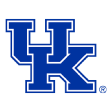
3. Kentucky Wildcats: Malik Monk
Most teams wouldn’t hand the ball to a freshman before he has ever played a game in college. UK isn’t most programs, though. In back-to-back games while at Bentonville (Ark.) High School, Monk made consecutive buzzer-beating 3-pointers. Both came while he was double-teamed; he even had to double-clutch on one. He’s likely to do it again in the clutch at the next level. — C.L. Brown
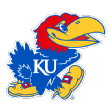
4. Kansas Jayhawks: Frank Mason III
It is oh-so-very tempting to go with freshman Josh Jackson here. The No. 2 player in his class, Jackson is scary good and wildly mature beyond his years. But it is hard to trump a senior who has started 74 games in the past two years and has a better handle on the college game. Mason could also pass the ball to Jackson, but with the game on the line, I’d always err on the side of experience. — Dana O’Neil

5. Virginia Cavaliers: London Perrantes
In recent years, Malcolm Brogdon was the obvious choice for a Virginia team that enjoyed elite status with the former star on the roster. But he’s gone now, so Perrantes would get the call to take the last shot for coach Tony Bennett. He made 48.7 percent of his 3-pointers last season, the sixth-best mark in America. He also connected on 80 percent of his free throw attempts. So it’s safe to put the ball in his hands with the game on the line. — Myron Medcalf

6. North Carolina Tar Heels: Joel Berry II
Last January, as Marcus Paige suffered through a baffling midseason shooting slump, coach Roy Williams said he’d “never had a player that [he’s] had more confidence in, in my entire life” than Paige. That trust was well-earned, and it won’t be replicated anytime soon. From a pure skill standpoint, though, Berry’s mix of perimeter shooting and first-step ballhandling makes him the most reliable candidate to hoist the big shots that would have fallen to Paige. — Brennan

7. Oregon Ducks: Dillon Brooks
Brooks might not be the best athlete on the team, but he’s the Ducks’ top player. He’s all about reliability, isn’t afraid of the moment and can score in a multitude of ways; he can shoot it from deep if necessary, but he’s also able to convert from midrange and around the basket. His versatility and IQ would enable him to get a high-percentage look. — Goodman

8. Wisconsin Badgers: Bronson Koenig
Taking the last shot is easier if you’ve done it before, and Koenig has the confidence he needs after delivering for the Badgers in the NCAA tournament last season. He was falling out of bounds into their bench but still managed to beat Xavier at the buzzer. He also turned it over with three seconds left in their Sweet 16 loss to Notre Dame. He’ll be better this season because of both situations. — Brown

9. Xavier Musketeers: Edmond Sumner
The Musketeers are fortunate to have two very good choices in Sumner and Trevon Bluiett, the team’s leading scorer last season. But the wiry and wily Sumner, coming off a sensational freshman year, has a great nose for the basket. He’s also due. It was Sumner, after all, who was called for a charge with 4.3 seconds left in a tied second-round NCAA tournament game against Wisconsin, setting up Koenig’s 3-point buzzer-beating heroics. — O’Neil

10. Michigan State Spartans: Eron Harris
After watching Denzel Valentine hit the game-winner in Monday night’s NBA Summer League title game, Michigan State fans probably wish they had another year with last season’s Associated Press National Player of the Year. But he’s gone, so coach Tom Izzo will probably put the ball in Harris’ hands in clutch situations. The pros? He made 44 percent of his 3-pointers and 80 percent of his free throw attempts last season. The cons? Harris often wrestled with lengthy stretches of inconsistency. Still, he’s a significant veteran on a team that will rely on young talent after losing key seniors. His team will turn to him in the final seconds. — Medcalf

11. Indiana Hoosiers: James Blackmon Jr.
One of the most impressive aspects of Indiana’s success last season was that it came with Blackmon, Jr. spending most of the season on the bench because of injury. Blackmon, who has averaged 15.8 points and shot 42.5 percent from 3 in his 46-game career, is a smooth offensive talent, a knockdown shooter who can create his own looks to boot. With Yogi Ferrell gone, expect the ball in Blackmon’s hands early and often in 2016-17. — Brennan

12. Arizona Wildcats: Allonzo Trier
The sophomore guard is a prolific scorer who wants the ball with the game on the line. He can drill it from deep, but he’s also able to get to the rim and score through contact. Most of all, though, his mental toughness would enable him to hit the game winner with all the pressure that comes with taking it. — Goodman
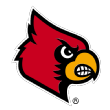
13. Louisville Cardinals: Donovan Mitchell
This might come as a surprise because Mitchell isn’t the best shooter or scorer on the team; he shot just 25 percent from 3-point range and averaged just 7.4 points per game as a freshman. But he plays without fear. That, more than anything, is how the guy taking the last shot needs to play. He’ll go to the rim without worrying about contact, and his athleticism will allow him to get creative if he needs to adjust. — Brown

14. Purdue Boilermakers: Vince Edwards
With a bevy of big men, it’s sometimes hard to tell the Purdue forest from the trees. Edwards stands out in this role. A 6-foot-8 forward, he can score down low and knocks down 3-pointers at a 41 percent clip. He also can drive to the rim and sink free throws steadily. That makes him a dangerous option in an end-of-game situation. — O’Neil

15. West Virginia Mountaineers: Daxter Miles Jr.
It’s hard to identify one player on a roster full of hot-today-cold-tomorrow threats. The same team that edged Oklahoma in the Big 12 tournament semifinals fell apart in losses to Kansas in the championship game and Stephen F. Austin in the opening round of the NCAA tournament. Miles made 63 percent of his shots at the rim last season, according to hoop-math.com. Plus, he can create shots (57 percent clip inside the arc), and he’s willing to attack when the Mountaineers need a bucket. — Medcalf

16. Gonzaga Bulldogs: Przemek Karnowski
Departed senior Kyle Wiltjer was more or less unstoppable on every possession (so long as Syracuse forward Tyler Lydon wasn’t on the floor, anyway); Gonzaga doesn’t have a player like that anymore. The good news? Before his back injury, Karnowski had developed into an efficient deep-post scorer and a deft passer out of double teams. That’s a good recipe for an open look, no matter the time or score. — Brennan

17. UCLA Bruins: Bryce Alford
This is a tough one. There’s Aaron Holiday, Isaac Hamilton and Bryce Alford. Freshman Lonzo Ball‘s best asset is his passing, but he can shoot it from deep as well. Despite the fact that you never know what you’re going to get with him, I’m going with Alford because of this. With Russell Westbrook in attendance, the coach’s kid drilled a 3-pointer with 1.8 seconds left to knock off rival Arizona at Pauley Pavilion. That’s clutch. — Goodman
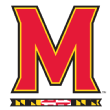
18. Maryland Terrapins: Melo Trimble
A junior guard, Trimble suffered through a shooting slump to close out last season, but he has developed a knack for making the big shot when it counts. Need a reminder? Check the game-winning 3-pointer he made at Wisconsin in January. The tricky part about defending Trimble late is he doesn’t always have to shoot it. He’s quick enough to break down defenders, get to the rim and dish it for the game-winning assist. — Brown

19. Saint Mary’s Gaels: Emmett Naar
Oh, to be Randy Bennett, the coach of a team where everybody can shoot. It makes that last-second nail-biter a lot less tense, doesn’t it? Naar, however, is the best of the bunch. He’s not only the Gaels’ leading scorer, he’s their best 3-point shooting threat, at 42 percent. Naar also shares the record for single-season assists in Saint Mary’s history. If he can’t shoot it he’ll give it to one of his teammates who can. — O’Neil
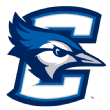
20. Creighton Bluejays: Marcus Foster
Creighton has options, but Foster is coach Greg McDermott’s best one with the game on the line. A former Kansas State star, he roared into the Big 12 with a remarkable freshman campaign in 2013-14 and followed that with a solid showing in his sophomore season. But off-court issues marred that second season and preceded his decision to transfer. He enters 2016-17 as a strong candidate for all-Big East honors. A 6-foot-3 wing, Foster won’t shrink in big moments. That’s why McDermott will give him the ball often in the last five minutes of any game. — Medcalf
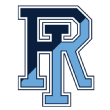
21. Rhode Island Rams: E.C. Matthews
Matthews’ stat-sheet-stuffing sophomore year didn’t always come at the most efficient clip, due in large part to a 22.3 percent turnover rate (32 percent shooting from beyond the arc didn’t help, either). That team was far less talented than the one Matthews, having sat out 2015-16 because of injury, will return to this year. He shouldn’t need to take 31 percent of his team’s shots these days, like he did then, and he’s likely to be even more effective as a result. — Brennan

22. Cincinnati Bearcats: Jacob Evans
The 6-foot-6 sophomore shot 33 percent from 3-point range last season, and he’s more than a one-dimensional guy who hoists shots from deep. He has the size to shoot over defenders and the ability to put the ball on the floor. Look for him to be a key player this year for coach Mick Cronin because of his ability to put the ball in the basket. — Goodman
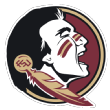
23. Florida State Seminoles: Xavier Rathan-Mayes
Rathan-Mayes took a step back offensively last season to let Dwayne Bacon and Malik Beasley shine for the Seminoles. But he is still the one who deserves the last shot when the game is on the line. A junior guard, Rathan-Mayes has four career 30-point games. He can get his shot off whenever he needs to, and he has deep range to make defenders respect him as soon as he crosses midcourt. — Brown

24.Connecticut Huskies: Jalen Adams
Seriously? You need to ask? Adams already hit a ridiculous last-second heave from beyond halfcourt in the 55th minute of a game against Cincinnati that the Huskies absolutely needed to win to get to the NCAA tournament. Who else might you suggest for the job? — O’Neil

25. Syracuse Orange: Tyus Battle
Few teams in the top 25 lost more than Syracuse after last year’s surprising run to the Final Four. Malachi Richardson cashed in on his rising stock and earned a first-round slot in June’s NBA draft. Michael Gbinije and Trevor Cooney are both gone. So Battle, No. 35 in the Class of 2016, should play a major role for coach Jim Boeheim. A 6-foot-5 wing, he has a blossoming midrange game and the versatility to make an impact from the perimeter or the post. He could turn out to be the squad’s most reliable threat in the final seconds. — Medcalf